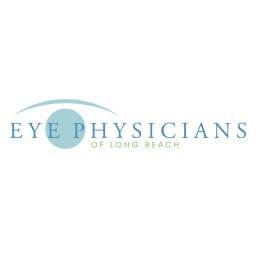Blog post by: Eye Physicians of Long Beach

Age related Macular degeneration (AMD), primarily known as age-related macular degeneration (AMD), is a common eye condition and a leading cause of vision loss among people aged 50 and older. It occurs when the small central portion of the retina, known as the macula, deteriorates. The macula is responsible for central vision, which is needed for seeing objects clearly and for common daily tasks such as reading and driving. This blog summarizes a recent study aimed at understanding lifestyle and medication choices that may affect the onset of changes related to macular degeneration.
AMD typically comes in two forms:
Dry AMD
This form is the most common, accounting for about 80-90% of cases. It develops when the macula thins over time as part of the aging process, gradually blurring central vision. Dry AMD tends to progress slowly and is diagnosed when yellow deposits, known as drusen, form beneath the retina. They interfere with the metabolism of the retina and lead to visual loss.
Wet AMD
Though less common, this late, more severe form, wet AMD is often more serious and can lead to rapid vision loss. It occurs when abnormal blood vessels grow under the retina and leak blood and fluids. This leakage causes permanent damage to light-sensitive retinal cells, which die off and create blind spots in central vision.
Understanding these forms is crucial for early detection and treatment, helping to preserve vision as long as possible. Age-related macular degeneration (AMD) is a significant cause of vision loss, affecting millions of Americans, with nearly 1.5 million suffering from its severe, late-stage form wet AMD. As treatments evolve, understanding the factors that influence the onset and progression of this condition is crucial.
Recent research from Kuopio University Hospital provides new insights into how lifestyle choices and other factors might influence the development and management of neovascular AMD (wet AMD), a particularly aggressive form of the disease.
Key Findings of the Study
The study analyzed data from 421 patients over 14 years, focusing on those without other retinal diseases. Through detailed examination and statistical analysis, researchers identified several factors that correlate with the age of onset and progression of nAMD:
High BMI and Smoking
Patients with a higher body mass index (BMI) and those who smoke heavily tend to be diagnosed with wet AMD earlier. This suggests that obesity and smoking could accelerate the onset of the disease.
Medication Use
Interestingly, the use of anticoagulation and antiplatelet medications is associated with a later onset of the disease. These medications, often prescribed for other cardiovascular conditions, might delay the progression of wet AMD.
The presence of intraretinal fluid
(IRF), a common finding in several retinal conditions, was linked to faster disease progression and more severe retinal damage.
What Does This Mean for You?
This study underscores the importance of lifestyle choices in managing the risk of AMD. Maintaining a healthy weight and avoiding smoking can potentially delay the onset of wet AMD. Moreover, for those at risk, regular monitoring of retinal health, possibly including the early adoption of treatments like intravitreal injections, can preserve vision longer.
Practical Advice for Preventing AMD
Healthy Living:
Adopt a balanced diet, maintain a healthy weight, and exercise regularly.
Avoid Smoking:
If you smoke, seek help to stop as it significantly increases the risk of AMD.
Regular Eye Exams:
Early detection through regular eye exams can lead to earlier intervention, which can slow the progression of the disease.
Closing Thoughts
The study from Kuopio University Hospital highlights the complex interplay between genetics, lifestyle choices, and medical treatments in managing wet AMD.. By considering these factors, healthcare providers can better tailor treatments to individual patients, potentially improving outcomes and maintaining quality of life.
For those at risk or currently managing wet AMD, it’s a call to action to consider how lifestyle factors might influence the progression of this challenging condition. For patients, it is important to follow these lifestyle changes to minimize the risk of progression.
